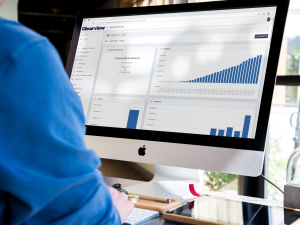02 November 2022
How to Prepare a Going Concern Forecast for Your Audit

As a finance manager, you know that over recent years an increasingly important part of a successful audit is a going concern forecast.
In the aftershock of Covid19, and following high profile corporate failures such as Carillion and BHS, the Financial Reporting Council (FRC) updated the auditing standard on going concern audits. The revised standard requires a much stronger hand from auditors in challenging management’s assessments of going concern. The new requirements mean that companies now must take going concern forecasts seriously as part of their annual auditing responsibilities.
When preparing financial statements, finance managers and accountants make assumptions about the future viability of the company. This can be referred to either as the going concern assumption or the going concern principle. This means that they assume the company will be able to continue operating for the foreseeable future and will not be forced to liquidate its assets. However, if a company is facing significant economic uncertainty due to external events, such as a natural disaster or pandemic, this assumption may no longer be valid. In these cases, management must assess whether there is significant doubt about the company’s ability to continue operating and whether the going concern assumption is still accurate. If there is significant doubt, the financial statements must be adjusted accordingly. While this may be difficult in the current climate of economic uncertainty, it is essential in order to provide accurate information to investors and other stakeholders.

What is a Going Concern Forecast?
A going concern forecast is a statement of the company’s ability to continue operating for the foreseeable future. The forecast takes into account the company’s financial position, recent trends, and other factors. The purpose of the forecast is to provide information that will help the auditor to assess the risks associated with the audit.
A key part of the going concern forecast is that it must cover 12 months from signing off the year end financial statements. This is very different to most forecasts covering the 12 months after the year end. To save valuable time doing this, it is often better to create a new, top level forecast for the purpose of the going concern review potentially using time saving software.
Going concern forecasts are performed to assess whether a company’s financial statements can be relied upon. It helps investors and creditors make informed decisions about whether to invest in or lend to a company. Naturally due to the global economic turbulence in recent years investors are becoming increasingly savvy regarding going concerns and understand the questions they must ask and financial reporting they need to see in order to accurately assess both risk and opportunity.
An inability to prepare and present a credible going concern forecast could ultimately lead to the auditors highlighting this in your Audit Report. The implications of this are serious, including a negative impact on your credit rating which in turn leads to tighter supplier terms and difficulty with current and future funding.
What to Include in a Going Concern Forecast
There are several elements that must be included in a going concern forecast. These include:
-A description of the company’s business model
-An assessment of the company’s financial position
-An analysis of recent trends
-A discussion of management’s plans for addressing financial challenges
-A description of the auditor’s opinion on the company’s ability to continue operating as a going concern.
-The date of the most recent going concern assessment.
The going concern forecast should be prepared by management and reviewed by the auditor. The auditor should consider whether any changes have occurred since the last going concern assessment that could impact the company’s ability to continue operating.
After reviewing the forecast, the auditor should make a determination as to whether there is sufficient evidence to support management’s assertion that the company is a going concern. If there is not enough evidence, then additional work may be required to demonstrate viability.
When submitting an assessment of the company’s financial position, smart forecast tools such as Clearview Hub can help to speed up this process.

Clearview is THE financial forecasting software that makes forecasting easy. It does all the hard work for you in the background, pulling together all the data. If you need an integrated view of your cashflow, p&l and balance sheet in one place to provide to your auditors or potential investors then Clearview can help you to do this quickly and accurately. There are no spreadsheets, no formulae, and no reports to configure. Clearview takes care of it all, so you can answer auditor’s questions quickly.
Clearview offers easy-to-use financial forecast software that helps businesses achieve their goals. Our software makes budgeting, cash flow forecasting and business planning simple and efficient.
A going concern forecast should also suggest a selection of assumptions. These should be assessed using various different scenarios, including at least one severe but plausible downside scenario.
Cash flow forecasting software such as Clearview can help you to plan and simulate your business in minutes. Using simple building blocks, you can model businesses of any size, complexity or industry. With a complete simulation of your business, you provide various assumptions to an auditor or investor.
Conclusion:
Not only is a going concern forecast an important element of a successful audit, it is also being used more and more by investors who are increasingly sensitive to risk. In order to prepare a going concern forecast, finance managers must include several key elements in their forecast. Including a description of the company’s business model, an assessment of the company’s financial position, an analysis of recent trends, and management’s plans for addressing financial challenges is time consuming, and so more and more finance managers are using forecasting software to help with this. Audit time can be scary and overwhelming time for finance managers, so using Clearview is an excellent way to ease the pressure.


 March 17, 2025
March 17, 2025


